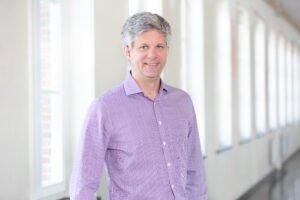Principal investigators of the research unit
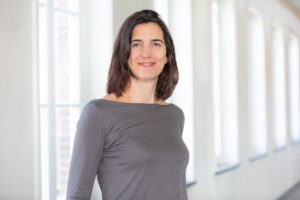
Melanie M. Brinkmann, Prof. Dr. rer. nat.
Technische Universität Braunschweig (P01)
- m.brinkmann@tu-braunschweig.de
My research life is pretty much dominated by herpesviruses and how they elegantly manipulate their host to establish lifelong infections. As a PhD student with Thomas Schulz at Hannover Medical School (MHH), I studied the signaling activity of the viral membrane protein K15 of the human tumorvirus Kaposi‘s sarcoma-associated herpesvirus (KSHV). During my postdoc in Hidde Ploegh’s lab at the Whitehead Institute in Cambridge USA, I worked in a team of great researchers and discovered novel regulatory factors of crucial sentinels of our innate immune system, the Toll-like receptors. These receptors have a crucial role for controlling pathogens immediately after infection. Since I became group leader at the Helmholtz Centre for Infection Research and Professor at the TU Braunschweig, my team discovered novel evasion mechanisms employed by the herpesviruses KSHV and Cytomegalovirus (CMV) to avoid their clearance by the innate immune system. These viral strategies allowed novel insights into the function of the antiviral host response, that will pave the way to optimize treatment against chronic herpesviral infections.
Outside the lab, I enjoy hikes and bike rides with my husband and our three boys, trying hard to keep up with them (so far, I manage).
The central research focus of my group is the interaction of herpesviruses with their host cells as well as with the immune system. We use a broad spectrum of systems biology methods combined with strong reverse genetics to better understand the interactions between these large DNA viruses with their host cells and the innate as well as the adaptive immune system. In this regard, systems biology methods offer the exciting opportunity to discover and functionally better understand completely new and thus unexpected regulatory mechanisms. This systems biology approach allows us to unravel the unique complexity of virus-host interactions of herpesviruses. My research is positioned at the frontier between experimental molecular virology and bioinformatics. Based on extensive in-house datasets, but also on datasets published by other research groups, much more reliable hypotheses can be generated for experimental validation. “Systems biology” as a basis thus allows us to significantly increase the probability of developing scientifically correct hypotheses. A particular focus of my research is the RNA biology of cytomegalovirus (CMV) and herpes simplex virus 1 (HSV-1) infections. Here, we established strong reverse genetics techniques that allow us to generate and functionally characterize any viral mutant of interest within a few weeks.
Outside the lab, I enjoy spending my time with my family in the great outdoors.
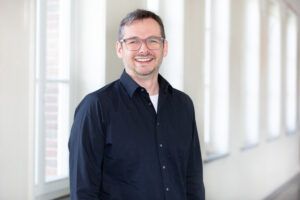
Florian Erhard, Prof. Dr. rer. nat.
Universität Regensburg (P02)
- florian.erhard@informatik.uni-regensburg.de
Incredible amounts of experimental data are now routinely produced in the lab, and there is no way to learn a lot from these amounts without specialized computational methods. Analyzing these big data sets is quite challenging but offers unprecedented opportunities: For the first time, we have the chance to understand how complex systems such as a virus infected cell work. Already during my PhD and time as a postdoc at the LMU Munich I developed and used computational methods to study virus infections. A main focus of my group at the University of Würzburg (2017-2023) was to resolve fast, dynamic changes of cellular processes. Since 2023, we moved to the University of Regensburg, where we continue these endeavors, and we are more and more successful in this by a combination of biochemical and bioinformatical tricks. Based on these new approaches we study how viruses exploit the complex molecular processes in their host cells and how they are able to evade cell-intrinsic immune defense mechanisms.
Whenever I am not sitting in front of my computer, I enjoy, according to the season, swimming / biking / playgrounds or sledging / skiing / ice skating together with my wife and two kids.
I studied Biology in Würzburg and early on became interested in the regulation of gene expression that takes place at the level of mRNA. During my studies I spent a year in the laboratory of David Shub at the State University of New York at Albany, where we searched for self-splicing group I introns in genomes of bacteriophages and started my journey in the RNA field. An unexpected discovery of several introns in RNA of the phage Twort (likely isolated by Frederick Twort) brought me back to David’s lab. I continued in his lab for my PhD to study DNA endonucleases that are encoded in group I introns of phages that promote the mobility of these intervening sequences on the DNA level. After a short one-year postdoc in Marlene Belfort’s lab (Wadsworth Center, NY State Department of Health), where I studied the evolutionary link between group II and spliceosomal introns, I joined the lab of Tom Tuschl at Rockefeller University in New York City. In Tom’s lab I first studied microRNA processing and regulation. Together with Markus Hafner, a fellow postdoc, we then developed PAR-CLIP, a crosslinking approach in combination with next generation to map transcriptome-wide the binding sites of RNA-binding protein. In 2009 I moved to the newly founded Berlin Institute for Medical Systems Biology at the Max-Delbruck Center for Molecular Biology as junior group leader. I was very fortunate that several outstanding PhD students early on and later postdocs joined the lab. We discovered more than 300 novel hundred and worked on the regulatory function of several RNA-binding proteins. Over the past years we started using our approaches to study the regulation of gene expression in the context of DNA damage, stem cell differentiation, and virus infections.
In my free time I spend time with my family and go cycling.
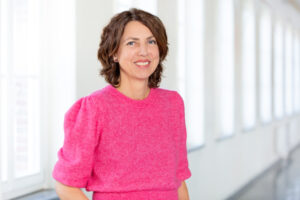
Nicole Fischer, Prof. Dr. rer. nat.
University Medical Center Hamburg-Eppendorf, UKE (P04)
- nfischer@uke.de
Chronic DNA viruses and their clinical relevance have always fascinated me. Starting in my master’s thesis and doctoral dissertation with herpes viruses, I eventually got hooked on polyomaviruses and their adaptation to the host. I am particularly interested in how these viruses have evolved strategies to persist for life in the host and how this persistence can lead to clinically highly relevant diseases, such as Merkel cell carcinoma, an aggressive skin cancer type caused by the Merkel cell polyomavirus. I learned how exciting interdisciplinary work could be in my postdoctoral years at Berkeley and San Francisco. As a joint postdoc working with Don Ganem and Joe DeRisi, two outstanding virology and system biology scientists, I applied and developed microarrays and high-throughput sequencing techniques. This has had a significant impact on my science until today.
My spare time is also shaped by my many years in California; being out in nature is something I enjoy. Whether it’s the Pacific Ocean or the Elbe River, it’s just fun to be by the water.
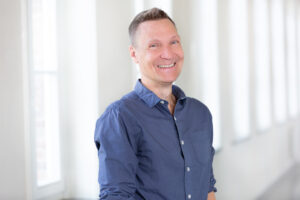
Adam Grundhoff, Prof. Dr. rer. nat.
Leibniz-Institut für Virologie – LIV (P05)
- adam.grundhoff@leibniz-liv.de
After a few semesters in mathematics and physics, I studied biology at Saarland University, where I discovered my fascination for virology. I did my master’s and doctoral thesis at the Saarland University Hospitals in Homburg, where I studied the Epstein-Barr virus (EBV), a herpesvirus that causes a number of human tumor diseases. This period also saw the discovery of Kaposi sarcoma-associated herpesvirus (KSHV), a relative of EBV. Besides some B-cell lymphomas, KSHV causes the eponymous Kaposi sarcoma, a tumor that saw a dramatic increase in case numbers following the AIDS epidemic. After completing my PhD, I went to the University of California at San Francisco (UCSF) to work in the laboratory of Don Ganem, one of the pioneers of KSHV research. There, I was able to work with newly developed microarrays, an analysis technique that for the first time allowed the interrogation of complete transcriptomes. In the process, I could also expand my bionformatics skills, e.g., by developing algorithms for the identification and analysis of viral miRNAs. The investigation of experimental infection systems using omics analysis methods, as well as the development and adaptation of bioinformatic analysis methods have been the focus of my research ever since. From 2005 on, I am leading a research group at the Leibniz Institute for Experimental Virology in Hamburg, where I am investigating KSHV, but also other human pathogenic DNA viruses such as Merkel cell polyomavirus. In addition, we use metagenomic sequencing to identify infectious agents in clinical samples. The variety of intellectual challenges associated with these topics are a major part of my scientific motivation.
In my free time, I enjoy being outdoors – whether by bike or on foot.
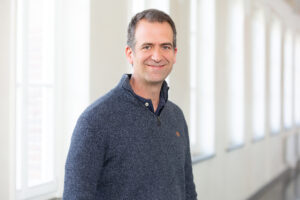
Abel Viejo-Borbolla, Prof. Dr. rer. nat.
Medizinische Hochschule Hannover (P05)
- viejo-borbolla.abel@mh-hannover.de
I always wanted to be a scientist (and a basketball player…). My idea of being a scientist was based on those crazy characters in cartoons that make explosive devices. Later, I realized that it is possible to have fun in the lab without explosions. Since my basketball skills were not good enough, I decided to study Molecular Biology and Biochemistry at “Universidad Autónoma de Madrid” (Spain). I did the last year of my career at the University of Leeds (UK), where I carried out a 6-month research project on nitrogen fixation by bacteria. This first approach to research in the UK motivated me to do my PhD in that country, despite the bad weather and low level of basketball. I really liked the multidisciplinary approaches and the multicultural environment of the UK research institutions. I obtained a Medical Research Council/Glaxo Wellcome fellowship to join the labs of Thomas Schulz (University of Liverpool) and Eddie Blair (Glaxo Wellcome) and did my PhD trying to improve retroviral vectors for gene therapy. Afterwards, I did a postdoc in Hannover Medical School working on Kaposi’s sarcoma-associated herpesvirus and then moved back to Madrid to work with herpes simplex virus. Since then, I have been interested in how herpesviruses modulate elements of both the immune and nervous systems and how they establish latency and reactivate. These are the two main topics of my lab.
In my free time I enjoy spending time with my family, walking in the forest with my dog and, of course, playing basketball.
My research interest includes virus latency, integration, pathogenesis and virus-induced tumor formation. Already prior to my bachelor in Molecular Biotechnology at the Technical University of Munich, I worked on plant pathogens at the Biotech Company EpiLogic. After my Bachelor, I started my PhD in Biomedical Sciences at Cornell University. During my PhD, I worked on various herpesviruses including Varicella-Zoster Virus (VZV), Bovine Herpesvirus 1 (BHV-1) and Marek’s disease virus (MDV). We discovered e.g. how MDV integrates into the telomere of host cells during latency and investigated the contribution of a virus encoded telomerase RNA (vTR) in virus-induced tumor formation. After my PhD, I started my own laboratory and became a professor at the Freie Universität Berlin. Since then, we expanded our research on other viruses including human herpesvirus 6 (HHV-6) and made exciting discoveries on its integration into host telomeres and latency. Overall, we investigate both human and veterinary viruses to expand our knowledge on their latency, pathogenesis and virus-induced tumor formation.
In my free time I enjoy spending time with my wife and our three kids, gardening, biking and playing badminton.

Thomas Stamminger, Prof. Dr. rer. nat.
Universitätklinikum Ulm (P07)
- Thomas.Stamminger@uniklinik-ulm.de
My research is focused on a specific herpesvirus, human cytomegalovirus (HCMV). I started to study this virus more than 30 years ago as a research assistant in Bernhard Fleckensteins laboratory in Erlangen. A central question that I wanted to answer was: how does this virus initiate its gene expression after host cell entry and what is the function of the so-called viral major immediate early proteins that are expressed at the beginning of viral replication? On our way to answer these questions we encountered an enigmatic nuclear structure called PML nuclear bodies. These are protein complexes of the cell nucleus consisting of >160 different components with a multitude of functions for cell cycle regulation, stress response and DNA damage repair. Our research revealed that these structures mediate an intrinsic cellular defense against a variety of viruses including HCMV. Consequently viruses have evolved effector proteins to annihilate this defense. Since I am Director of the Institute of Virology in Ulm we use a broad panel of methods to study the interplay between intrinsic host cell defense mechanisms and antagonistic viral proteins in order to develop novel strategies for antiviral therapy.
Whenever I am not working, I enjoy spending time with my family. In addition, I love big band jazz and it’s fun to play Lead Trumpet in the Big Band Ulm.

Sabrina Schreiner, Prof. Dr. rer. nat.
Universitätsklinikum Freiburg (P08)
- sabrina.schreiner-gruber@uniklinik-freiburg.de
Since I started my scientific life at the University of Regensburg where I did my diploma in Biology I am fascinated by the diverse family of adenoviruses. They are widespread and diversified pathogens causing a multitude of infections with growing numbers of fatalities in immune-compromised patients. Their medical importance is exacerbated by the fact that most of the adenoviruses that are pathogenic for humans, are poorly studied in part because of a shortage of suitable in vitro and in vivo infection models. I worked a lot on novel virus host interactions at the Heinrich-Pette-Institute, before I started my own lab in Munich at the Technical University. Highly important my team within the DEEP-DV consortium is the fact that adenoviruses can persist after the acute infection and may reactivate in case of immunosuppression. In fact, an increased morbidity and mortality has been observed in stem cell transplanted patients as a consequence of adenovirus infections. The origin of these infections is not well understood yet, as it is not clear whether the adenovirus infections are nosocomial, are transmitted with the stem cell graft, come from the donor, or whether most of these “infections” come from the patient by reactivation of a latent infection. Outside the lab I enjoy every second with my children and my husband visiting play grounds and animals wherever we can find them. Also swimming and biking is what we love to do together.

Jens Bosse, Prof. Dr. rer. nat.
Center for Structural Systems Biology, CSSB (P09)
- jens.bosse@cssb-hamburg.de
My junior group at the Center for Structural Systems Biology (CSSB) focuses on illuminating the spatiotemporal orchestration of herpesviruses morphogenesis using cutting-edge live-cell microscopy as well as 3D correlative light and electron microscopy (CLEM). We complement these techniques with structural, proteomics, and genomics approaches in cooperation with our partners.
I studied Biotechnology at the RWTH Aachen and complemented it with some human medicine. Already there, I became fascinated by herpesviruses and their intricate life cycles. In my PhD at the LMU Munich with Ulrich Koszinowski and Zsolt Ruzsics, I started mixing a solid background in molecular virology with live-cell imaging. During my PostDoc in Lynn Enquist’s lab, I built custom microscopes to quantify how herpesvirus capsids move in the host nucleus. Afterward, I moved with my family to Hamburg. Here, I headed the light microscopy expansion of the imaging facility at the Leibniz Institute for Experimental Virology while building my group in the Department of Kay Grünewald. Since 2020, I have been a junior group leader at the CSSB. In DEEP-DV, we focus on the question of how Human cytomegalovirus establishes viral replication compartments (RCs) in the host nucleus to facilitate genome transcription and replication. We recently found that liquid-liquid phase separation (LLPS) plays a vital role in RC formation. We aim to understand how the virus recruits proviral factors into these phase-separated compartments.
I like taking care of my kids and our little zoo at home in my free time. When possible, I enjoy fishing, hunting, and the outdoors.
Since my time as a PhD student in bioinformatics in the lab of Ralf Zimmer in Munich my research has focused on the analysis of large-scale biological data determined with high-throughput methods. After an initial focus on the topology of protein-protein interaction networks and protein complexes, my research is now largely focused on developing methods for the integrative analysis of multi-omics data obtained with various next-generation-sequencing techniques, such as RNA-Seq, ATAC-Seq, ChIP-Seq and more. My PhD was followed by a short stay as a Postdoc in the same lab before I moved to Heidelberg University as an assistant professor and later returned to Munich on a tenure-track position. During this time, I became interested in investigating the impact of virus infections on host transcription, translation and chromatin architecture after discovering an intriguing new process by which herpes simplex virus 1 (HSV-1) manipulates host gene expression by disrupting transcription termination.
In my spare time, I enjoy running and activities on or in the water (mostly in the summer months). As a less physical diversion, I write short stories but with only moderate success so far.

